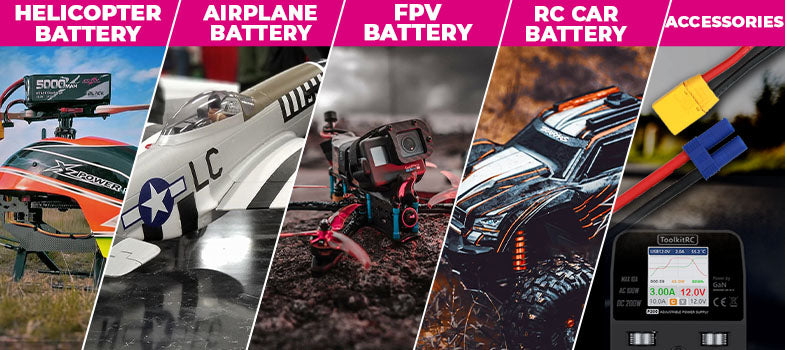
リモコンカー用バッテリー:よくある6つの間違いとその対処法
RCカーをトラック上で全速力で走らせたり、裏庭で激しく遊ばせたりするスリルは格別です。しかし、バッテリーが早期に切れたり、さらに悪いことに安全上の危険になると、その楽しみは一気に終わってしまいます。多くの一般的なバッテリー問題は完全に防ぐことができます。このガイドでは、RCカーのバッテリーにおける「6つの大きな敵」と、それらの落とし穴を回避し、パックを長持ちさせる方法を詳しく解説します。
1. 最大の敵:過放電 - 「最後の一滴のパワーを絞り出す」代償
これは特に新しいRCドライバーにとっては定番です。楽しくて、パックの最後の一滴まで使い切りたいと思います。車をほとんど動かなくなるまで走らせ、最終的に完全に停止させます。これが過放電です。
ここでの原則は、LiPo(リチウムポリマー)バッテリーとNiMH(ニッケル水素)バッテリーの両方に安全な最低電圧があるということです。LiPoバッテリーの場合、どのセルの電圧も約3.0Vを下回ると、永久的で不可逆的な損傷を引き起こす可能性があります。NiMHパックでも、負荷時の過度な電圧低下は有害となることがあります。
結果はかなり深刻です:バッテリーの容量は目に見えて減少し(稼働時間が短くなり)、内部抵抗が増加し(パワーが落ち)、LiPoバッテリーは膨張や「膨らみ」を始めることがあります。これは明らかに損傷していて潜在的に危険であるサインです。最終的には、バッテリーはただのスクラップになります。
では、これをどう避けるのでしょうか?
- 低電圧カットオフ(LVC)機能付きESCを使用する:ほとんどの最新の電子速度制御装置(ESC)にはLVC機能があります。これが有効で、バッテリータイプに合わせて正しく設定されていることを確認してください(例:LiPoの場合はセルあたり3.2V〜3.4V)。バッテリー電圧がこの閾値に達すると、ESCはモーターへの電力を減少または遮断し、停止の合図を出します。
- 走行時間を計測するか電圧アラームを使用する:特定のバッテリーで車がどれくらい走るか感覚を掴みましょう。タイマーをセットしてください。あるいは、バランスポートに接続して電圧が低下すると警告音を鳴らす小型で安価なLiPo電圧アラームを使用してください。
- 電力が低下したら停止:車のパワーや「パンチ」が著しく低下したと感じたら、走行をやめてください。限界まで無理をしないでください。

2. 致命的なエラー:過充電と誤った充電
充電は多くの深刻なバッテリー問題、特に火災の発生源です。過充電や誤った充電設定の使用は非常に危険です。
症状には、LiPoセルの電圧がセルあたり安全最大の4.2Vを超えることや、誤った充電器タイプやモード(例えばNiMH充電器設定でLiPoバッテリーを充電しようとするなど)が含まれます—絶対にやらないでください!
原理として、LiPoバッテリーの過充電は内部の化学反応を不安定で暴走状態にさせます。NiMHバッテリーの場合、過充電は過剰な熱の蓄積と腐食性電解液の漏れの可能性を引き起こします。
深刻な結果は軽視できません:LiPoバッテリーは著しく膨張し、非常に高温になり、発火や爆発することもあります!NiMHバッテリーは非常に熱くなり、液漏れし、寿命が大幅に短くなります。
これを避けることが非常に重要です:
- 使用するバッテリータイプに特化した高品質なスマート充電器に投資しましょう。LiPoバッテリーの場合、パック内のすべてのセルを均等に充電するバランス充電機能が必須です。
- 充電を始める前に、必ず正しいバッテリータイプ(LiPo、NiMHなど)、セル数(電圧)、充電電流を充電器で再確認してください。充電電流の一般的な目安は1C(例:5000mAhのバッテリーは5Aで充電可能)ですが、必ずバッテリーメーカーの推奨を確認してください。
- 充電中のバッテリーを絶対に放置しないでください。耐火性の場所(コンクリートの上やLiPoセーフバッグ/ボックス内など)、可燃物から離れた場所で充電してください。

3. 荒い扱い:物理的損傷 - "車のクラッシュは楽しいが、バッテリーは悲しい"
私たちのRCカーは激しい衝撃に耐えます—それが楽しみの一部です!しかし、派手なクラッシュや転倒、激しい着地は、バッテリーが保護されていなければ大きなダメージを与えます。鋭利な物による穴あきや過度の圧迫も深刻な損傷を引き起こします。
ここでの原則は、物理的衝撃がバッテリーの内部構造や外装を損傷する可能性があるということです。LiPoバッテリーの場合、内部短絡を引き起こすことがあります。NiMHバッテリーの場合、外装が破損し電解液漏れを起こすことがあります。
物理的損傷の結果は深刻です。穴あきや内部短絡したLiPoは火災を引き起こす可能性があります。損傷したNiMHは腐食性の化学物質を漏らし、車を損傷させたり皮膚を刺激したりします。
このバッテリーの悲劇を避けるために:
- バッテリーが車のバッテリートレイにしっかり固定されていることを確認してください。バッテリーストラップや安全なコンパートメントを使い、クラッシュ時にバッテリーが揺れたり飛び出したりしないようにしましょう。隙間がある場合はフォームパッドを追加してください。
- 激しいクラッシュや特に荒い走行の後は、バッテリーにへこみ、穴あき、膨張(LiPoの場合)などの損傷の兆候がないか確認してください。
- バッテリーの取り付けや取り外しは丁寧に行ってください。コネクターを無理に押し込んだり、落としたりしないでください。
4. 見えない殺し屋:極端な温度 - "氷と火"
バッテリーも私たちと同様に、最適な性能と安全のために好ましい温度範囲があります。
バッテリーを高温にさらすのは絶対に避けてください。これは夏の暑い車内に放置したり、過負荷のモーターやESCからの熱がバッテリーに伝わったり、非常に暑い環境で激しく走らせたりすることで起こります。結果として、劣化の加速、LiPoバッテリーの膨張、性能低下、熱暴走(火災)のリスク増加が生じます。
低温も問題を引き起こします。特にLiPoバッテリーの充電時に注意が必要です。凍結近く(0°Cまたは32°F)またはそれ以下の温度で高電流充電をしてはいけません。これによりアノードにリチウムメッキが発生し、内部抵抗が急激に増加し、充電効率が非常に低下し、すぐには分からないが後に故障につながる永久的な損傷を引き起こす可能性があります。
温度に関する問題を避けるために:
- バッテリーを直射日光の当たる場所や、夏の車のトランクのような熱がこもる密閉空間に放置しないでください。RCカーのモーター、ESC、バッテリー周辺に適切な通気を確保しましょう。
- 暑い日に激しく走らせる場合は、バッテリー(および電子機器)をパック間で冷やしてください。
- 寒い環境でLiPoバッテリーを使用していた場合、または寒い場所に保管していた場合は、充電を試みる前に室温まで温めてください。
5. 長期放置による劣化:不適切な保管 - "使っていなくても壊れることがある"
バッテリーを使っていなければ安全だと思うかもしれませんが、必ずしもそうではありません!数日以上の長期保管方法が非常に重要です。
LiPoバッテリーを満充電のまま長期間保管すると、劣化と膨張が加速します。逆に、LiPoまたはNiMHバッテリーを非常に低い充電状態(または完全放電)で保管すると、電圧が徐々に過放電状態に落ち込み、永久的な損傷を引き起こします。湿気の多い場所や非常に高温の環境での保管も悪影響を及ぼします。
正しい保管方法は次の通りです:
長期保管の場合、LiPoバッテリーは「保管電圧」、すなわちセルあたり約3.8Vから3.85Vの状態にしておくべきです。ほとんどのスマート充電器にはこの保管充電/放電機能があります。
NiMHバッテリーは一般的に満充電状態で保管できますが、時間とともに自己放電します。長期保管の場合は1~3ヶ月ごとにチェックして充電するのが良いでしょう。
すべてのバッテリーは涼しく乾燥した場所に保管し、特にLiPoバッテリーは耐火容器やLiPoバッグに入れるのが理想的です。
6. 不一致:バッテリーと電源システムがうまく連携しない
これは、バッテリーが実際に車のモーターとESCの要求に耐えられるかを確認することに関するものです。ここでの重要な仕様はバッテリーのCレーティング(放電率)と容量です。Cレーティングや容量が電源システムに対して低すぎる場合、バッテリーに設計上快適に供給できる以上の電流を要求していることになります。
原理としては、バッテリーを過電流放電状態に強制し、その内部化学に大きな負担をかけているのです。
その結果、バッテリーは使用中に非常に熱くなり、寿命が大幅に短くなり、性能が低下(パンチ力の低下、負荷時の電圧低下)し、最悪の場合は破滅的な故障を起こす可能性があります。
この不一致を避けるために、RCカーの電源システム(モーターとESC)に適したCレーティングと容量のバッテリーを選んでください。車の製造元や経験豊富なホビイストの推奨を確認しましょう。一般的に、必要より少し高めのCレーティングを選ぶ方が、低すぎるより良いです。
結論
あなたのRCカー用バッテリーは重要な投資であり、趣味を楽しむための鍵です。これらの「6つの大きな破壊要因」—過放電、過充電/誤った充電、物理的損傷、極端な温度、不適切な保管、システムの不一致—を理解し、これらの簡単な回避方法に従うことで、バッテリーの寿命を大幅に延ばし、費用を節約し、何よりも長年にわたり安全で楽しいRCアドベンチャーを維持できます。


ベストセラー
-
元の価格 $65.99元の価格 $65.99 - 元の価格 $65.99元の価格 $65.99$54.99 USD - $65.99 USD$54.99 - $65.99現在の価格 $54.99 USD
CNHL G+Plus 5000mAh 22.2V 6S リポバッテリー 70C EC5プラグ付き
在庫に10以上あります仕様: ストック番号: 500706EC5 容量: 5000mAh 電圧: 22.2V / 6セル / 6S1P 放電率: 70C 継続 / 140C バースト 充電率: 最大5C サイズ(1-5mmの誤差): 49X51X149mm(高さ*幅*長さ) おおよその重量(±5g) : 71...
詳細をすべて表示元の価格 $65.99元の価格 $65.99 - 元の価格 $65.99元の価格 $65.99$54.99 USD - $65.99 USD$54.99 - $65.99現在の価格 $54.99 USD最大17%節約 -
元の価格 $38.99元の価格 $38.99 - 元の価格 $38.99元の価格 $38.99$34.99 USD - $38.99 USD$34.99 - $38.99現在の価格 $34.99 USD
CNHL スピーディーピザシリーズ プロ 1350mAh 22.2V 6S 150C リポバッテリー XT60プラグ付き
在庫に10以上あります仕様: 在庫番号: 1351506PZ 容量:1350mAh 電圧:22.2V / 6セル / 6S1P 放電率:連続150C / バースト300C 充電率:最大5C サイズ(1-5mmの差異あり):38X38X78mm おおよその重量(±5g):215g 出力コネクター:XT60 バラン...
詳細をすべて表示元の価格 $38.99元の価格 $38.99 - 元の価格 $38.99元の価格 $38.99$34.99 USD - $38.99 USD$34.99 - $38.99現在の価格 $34.99 USD最大10%節約 -
元の価格 $51.98元の価格 $51.98 - 元の価格 $51.98元の価格 $51.98$45.98 USD - $51.98 USD$45.98 - $51.98現在の価格 $45.98 USD
2パック CNHL ブラックシリーズ V2.0 1300mAh 22.2V 6S 130C リポバッテリー XT60プラグ付き
在庫に10以上あります仕様 在庫番号: 1301306BK 容量: 1300mAh 電圧: 22.2V / 6セル / 6S1P 放電率: 130C 継続 / 260C バースト 充電率: 最大5C サイズ(1-5mmの差異あり): 48X33X77mm 重量(±5g): 210g 出力コネクター: XT60 バ...
詳細をすべて表示元の価格 $51.98元の価格 $51.98 - 元の価格 $51.98元の価格 $51.98$45.98 USD - $51.98 USD$45.98 - $51.98現在の価格 $45.98 USD最大12%節約 -
元の価格 $43.98 - 元の価格 $43.98元の価格 $43.98$43.98 USD$43.98 - $43.98現在の価格 $43.98 USD
[Combo] 2パック CNHL MiniStar 1500mAh 14.8V 4S リポバッテリー 120C XT60プラグ付き
在庫に10以上あります仕様: 在庫番号:1501204 容量:1500mAh 電圧:14.8V / 4セル / 4S1P 放電率:連続120C / バースト240C 充電率:最大5C サイズ(1-5mmの差異):37X33X76mm おおよその重量(±5g):169g 出力コネクター:XT60 バランスコネクター...
詳細をすべて表示元の価格 $43.98 - 元の価格 $43.98元の価格 $43.98$43.98 USD$43.98 - $43.98現在の価格 $43.98 USD -
元の価格 $23.98 - 元の価格 $37.98元の価格 $23.98 - 元の価格 $37.98元の価格 $23.98$19.98 USD - $37.98 USD$19.98 - $37.98現在の価格 $19.98 USD
2パック CNHL ブラックシリーズ 2200mAh 3S 11.1V 30C リポバッテリー XT60プラグ付き
在庫に10以上あります仕様: 在庫番号:220303BK 容量:2200mAh 電圧:11.1V / 3セル / 3S1P 放電率:30C連続 / 60Cバースト 充電率:最大5C サイズ(1-5mmの誤差あり):24X34X106mm おおよその重量(±5g):180g 出力コネクター:XT60 バランスコネク...
詳細をすべて表示元の価格 $23.98 - 元の価格 $37.98元の価格 $23.98 - 元の価格 $37.98元の価格 $23.98$19.98 USD - $37.98 USD$19.98 - $37.98現在の価格 $19.98 USD最大17%節約
新しいアイテム
-
元の価格 $122.99 - 元の価格 $122.99元の価格 $122.99$122.99 USD$122.99 - $122.99現在の価格 $122.99 USD
VOLANTEX BF109 RC 飛行機 4チャンネル RTF – ジャイロ&XPilot搭載 第二次世界大戦戦闘機
残り9台のみVOLANTEX BF109 4チャンネル RCプレーン RTFは、最も象徴的な第二次世界大戦の戦闘機の一つを、コンパクトで初心者に優しいパッケージにまとめました。400mmの翼幅、軽量なEPPフォーム製の機体、そしてXPilotジャイロシステムを備えたこの戦闘機は、新しいパイロットに滑...
詳細をすべて表示元の価格 $122.99 - 元の価格 $122.99元の価格 $122.99$122.99 USD$122.99 - $122.99現在の価格 $122.99 USD -
元の価格 $117.99 - 元の価格 $117.99元の価格 $117.99$117.99 USD$117.99 - $117.99現在の価格 $117.99 USD
Volantex RC プレーン P51D V2 400mm RTF – 初心者向けXPilotスタビライザー付き4CHウォーバード
残り9台のみVolantex RC Plane P51D V2 RTFは、学習をできるだけリラックスして行えるように設計されたコンパクトな第二次世界大戦スタイルの戦闘機です。400mmの翼幅、EPPフォーム構造、XPilot 6軸スタビライザーを備え、このVolantex RC飛行機は初心者に滑らかな...
詳細をすべて表示元の価格 $117.99 - 元の価格 $117.99元の価格 $117.99$117.99 USD$117.99 - $117.99現在の価格 $117.99 USD -
元の価格 $148.87 - 元の価格 $148.87元の価格 $148.87$148.87 USD$148.87 - $148.87現在の価格 $148.87 USD
MF-A84 690mm P-47スタイル ブラシレス RC 飛行機 (RTF、カメラなし)
残り9台のみMF-A84 690mmブラシレスRC飛行機は、P-47サンダーボルトやKi-84などのクラシック戦闘機に触発された戦闘機スタイルのモデルです。強力なブラシレスモーター、3モードジャイロシステム、EPPの耐久性、最大25分の飛行時間を備え、初心者から経験者まで簡単で刺激的な体験を提供しま...
詳細をすべて表示元の価格 $148.87 - 元の価格 $148.87元の価格 $148.87$148.87 USD$148.87 - $148.87現在の価格 $148.87 USD -
元の価格 $95.99 - 元の価格 $95.99元の価格 $95.99$95.99 USD$95.99 - $95.99現在の価格 $95.99 USD
CNHL G+Plus 6000mAh 22.2V 6S 100C リポバッテリー EC5プラグ付き
在庫に10以上あります仕様: ストック番号: 6001006EC5 容量: 6000mAh 電圧: 22.2V / 6セル / 6S1P 放電率: 100C 継続 / 200C バースト 充電率: 最大5C サイズ(1-5mmの差異): 40X66X170mm(高さ*幅*長さ) おおよその重量(±5g) : ...
詳細をすべて表示元の価格 $95.99 - 元の価格 $95.99元の価格 $95.99$95.99 USD$95.99 - $95.99現在の価格 $95.99 USD -
元の価格 $63.99 - 元の価格 $63.99元の価格 $63.99$63.99 USD$63.99 - $63.99現在の価格 $63.99 USD
CNHL G+Plus 6000mAh 14.8V 4S 100C リポバッテリー XT90プラグ付き
在庫に10以上あります仕様: 在庫番号:6001004 容量:6000mAh 電圧: 14.8V / 4-セル / 4S1P 放電率:連続100C / バースト200C 充電率:最大5C サイズ(1-5mmの差異あり):27X66X170mm おおよその重量(±5g):669.5g 出力コネクター:XT90 ...
詳細をすべて表示元の価格 $63.99 - 元の価格 $63.99元の価格 $63.99$63.99 USD$63.99 - $63.99現在の価格 $63.99 USD


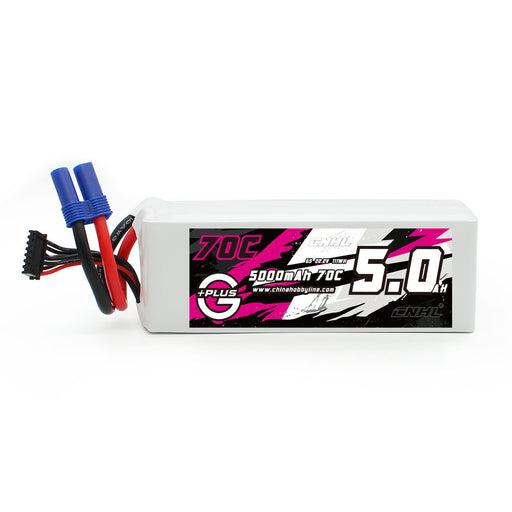





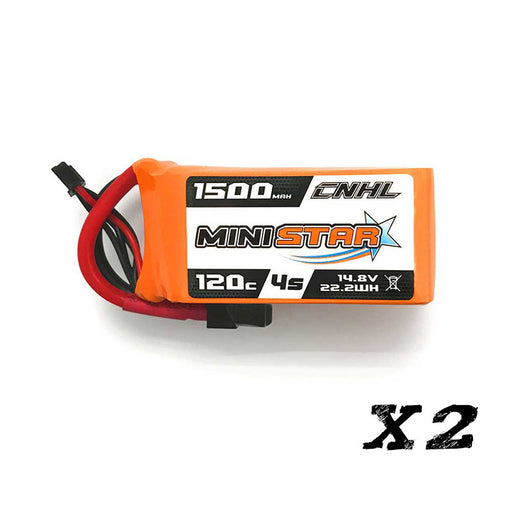
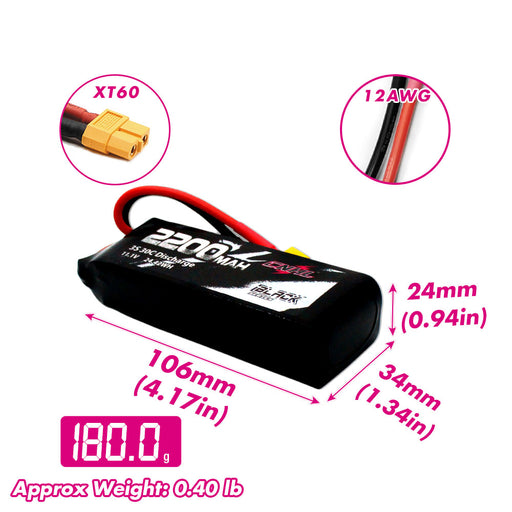
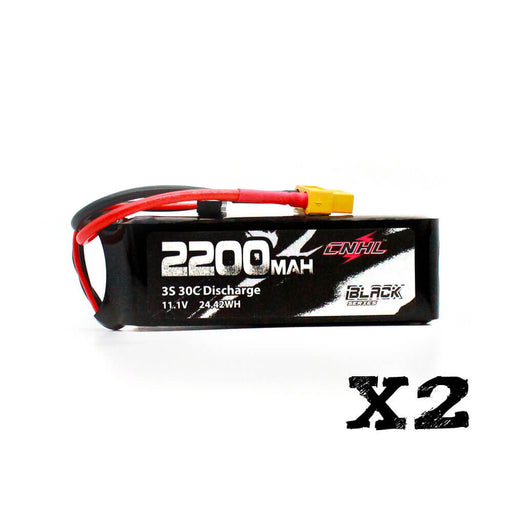










コメントを残す